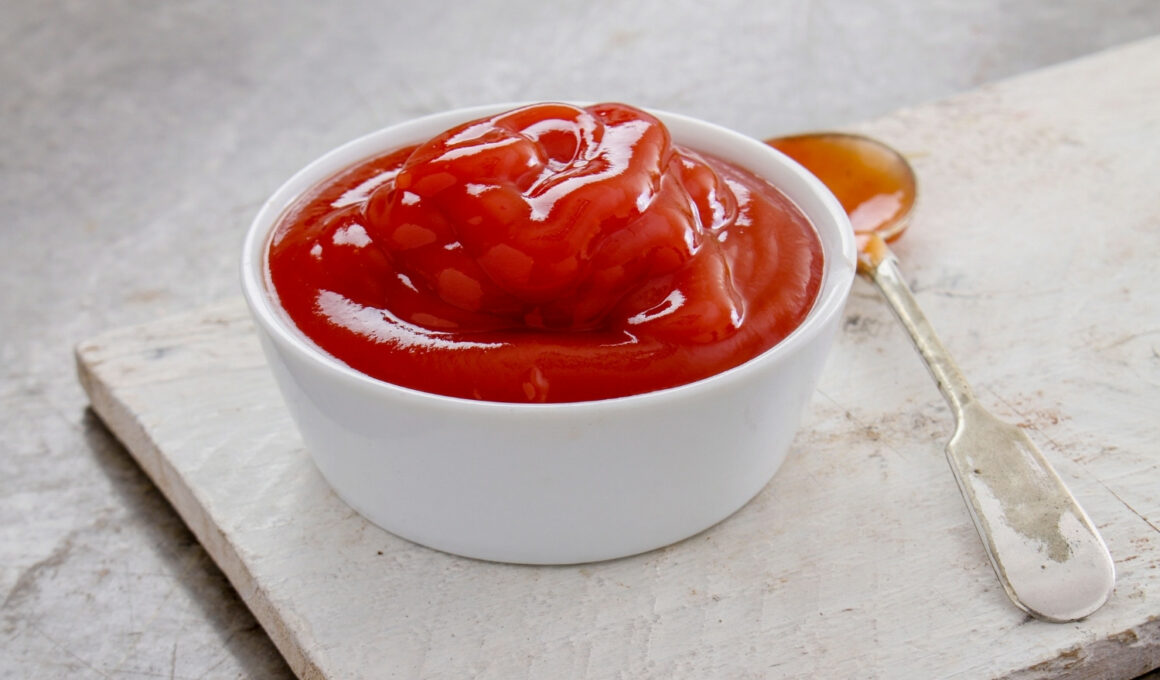In This Article Show
As an experienced mom who’s whipped up countless meals for my little ones, I’ve been asked many whimsical questions. “Why is the sky blue?”, “Can I have cookies for breakfast?”, and “Why do vegetables exist?”.
Yet, one debate never seems to go away, tickling both my culinary and playful side: “Is ketchup really a smoothie?”. Let’s be honest, it’s a question that might’ve made you chuckle or scrunch up your nose.
But if you’ve ever found yourself pondering over food classifications while fixing a sandwich (Is a hot dog really a sandwich?), then you know that these debates can be both fun and surprisingly complex.
Through years of parenting, cooking, and answering many children’s questions, I’ve realized that there’s often more than meets the eye – or in this case, the taste buds. So, let’s dive in, shall we?
What Defines A Smoothie?
Ah, smoothies. These delightful drinks have saved many a morning for me. As a mom, they’re my go-to when the kids demand something delicious but I’m gunning for nutritious. But what truly makes a smoothie… well, a smoothie?
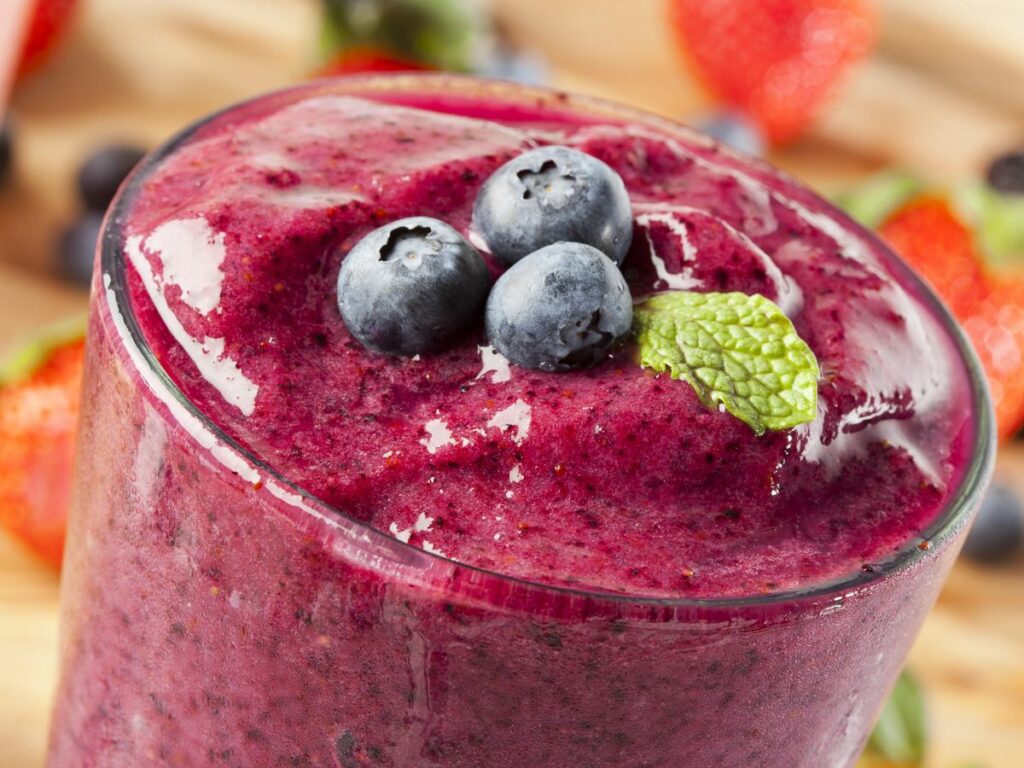
First things first, let’s look at the basics. A smoothie, at its core, is a thick, creamy beverage made by blending raw fruits and vegetables, often with some kind of liquid like water, milk, or yogurt. Some like to add a touch of sweetness with honey, maple syrup, or a scoop of protein powder for an added boost.
Great deals to snatch for your little ones 🎉
Historically, smoothies have roots in various cultures. Think about it – for years, many societies have been blending fruits with water, milk, or yogurt to create refreshing drinks, especially in tropical regions where fruits are abundant.
A key characteristic of smoothies is their texture. It’s not just about blending ingredients together; it’s about achieving that specific consistency that is thick yet drinkable, smooth yet with little bits of fruits sometimes peeking through.
But here’s the thing: not all blended beverages are smoothies. For instance, juices are also the product of blended fruits but are distinctly different due to their watery consistency and extraction process.
In the midst of making countless smoothies for my children (and let’s admit, for myself too), I’ve realized that while the definition seems straightforward, it’s the interpretation that can vary widely. So, when we put ketchup under this lens, things get interesting.
Breaking Down Ketchup’s Composition
Ketchup – it’s the condiment champion of countless cuisines, gracing everything from fries to meatloaf. But what exactly is inside this ubiquitous red sauce?
To begin with, ketchup’s primary ingredient is tomatoes. Tomatoes are pulped and often cooked down to extract their juices and intensify their flavors. This process also helps in achieving that thick consistency we associate with ketchup.
Next up, we have vinegar. This provides ketchup with its signature tang, balancing out the natural sweetness of the tomatoes. It’s also essential for preservation, ensuring that the sauce remains shelf-stable for longer.
Then there’s sugar. Depending on the recipe or brand, the amount of sugar in ketchup can vary, but it’s typically added to enhance the taste and counteract the acidity of the tomatoes and vinegar.
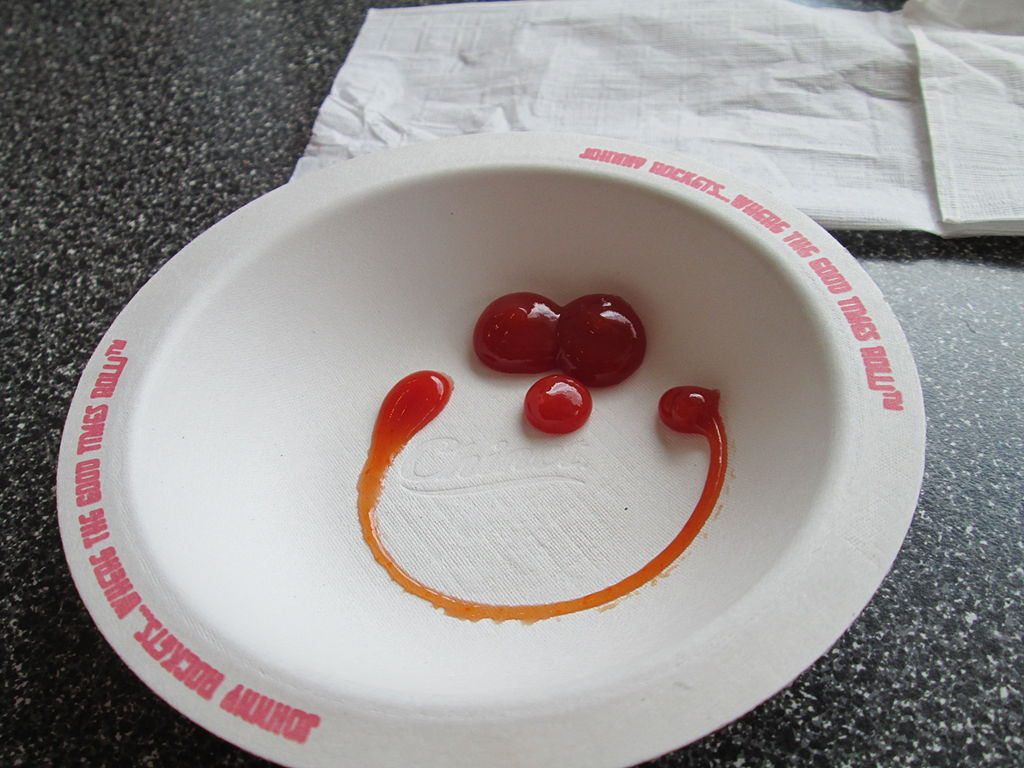
Spices and seasonings play a pivotal role too. Common additions include onions, garlic, and sometimes even celery or mustard seeds. These elevate the flavor profile of ketchup, transforming it from a simple tomato sauce to the rich condiment we all know and love.
And of course, let’s not forget the salt. Like in most recipes, salt is used to bring out and meld the various flavors of ketchup.
Now, comparing this to a smoothie, we notice some similarities but also some key differences. Both involve blending ingredients to achieve a particular texture and consistency. However, ketchup undergoes a cooking process, which is a marked departure from the usually raw nature of smoothies.
Food Classifications and Their Ambiguities
Beyond its primary purpose of nourishment, food is also a source of delight, tradition, and sometimes, confusion. Over the years, how we categorize certain foods has led to many a raised eyebrow and chuckle. Let’s dive into some of the most amusing and perplexing classifications in the culinary world.
First up, the age-old debate: is a tomato a fruit or a vegetable? Botanically speaking, a tomato is a fruit. It develops from the ovary of a flower and contains seeds. But when it comes to culinary traditions and practices, it’s typically treated as a vegetable due to its savory flavor profile.
This duality has even reached the courts! In the 1893 U.S. Supreme Court case Nix v. Hedden, tomatoes were legally classified as vegetables for tariff reasons.
Then, there’s the enduring discussion around Jell-O salad. This dish defies easy classification with ingredients ranging from fruits to vegetables to mayonnaise. Is it a dessert? A side dish? Its sweet and savory components have left diners both delighted and befuddled.
And who could forget the debate about sandwiches? Does the inclusion of bread automatically make something a sandwich? Does a hot dog fit the bill? Or a taco? It’s a discussion that brings out passionate opinions and technicalities, with many resorting to humorous flowcharts and diagrams to make their point.
While seemingly trivial, these debates highlight a bigger issue: the blurry lines between cultural, botanical, and culinary definitions. While science may provide clear-cut answers in some cases, cultural practices and traditions often paint a different picture. This rich tapestry of definitions and classifications makes the culinary world so diverse and intriguing.
And so, as we attempt to classify ketchup within this vast landscape, it’s essential to remember that the answer might not be as straightforward as we’d like. But that’s what makes the journey so enjoyable.
Arguments For Ketchup As A Smoothie
The idea of ketchup as a smoothie might seem far-fetched to many. Yet, when you break it down, some compelling arguments could put ketchup in the smoothie category, or at least on its fringes. Here are some reasons to consider:
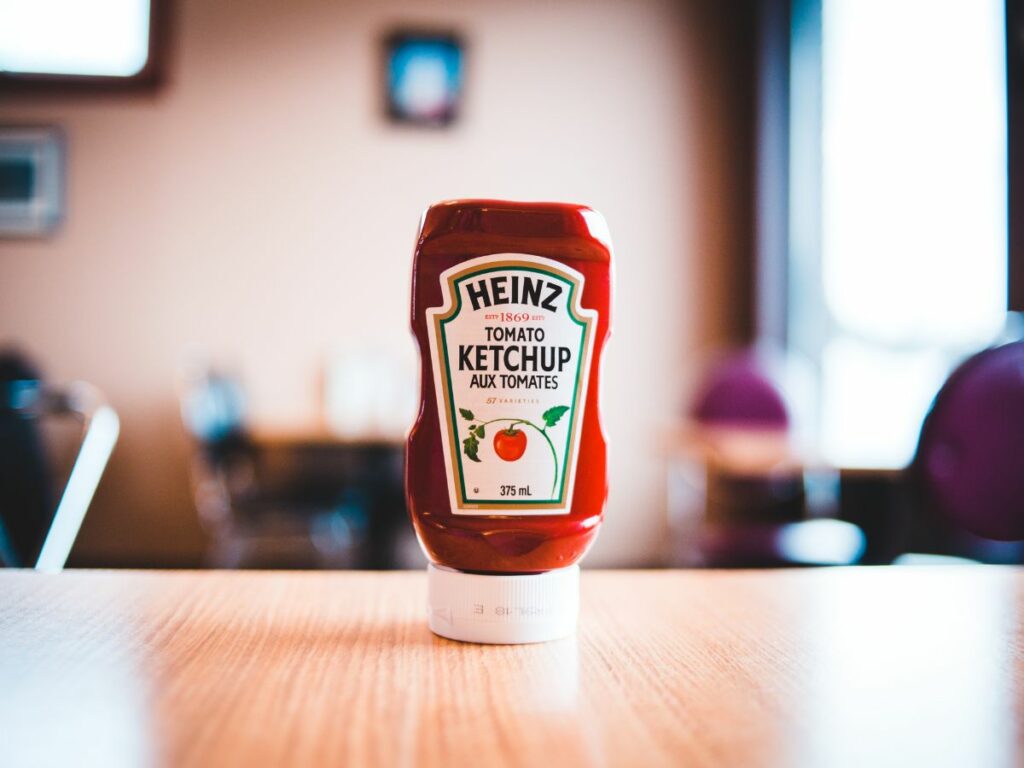
1. Tomatoes Are Fruits
As we’ve established, botanically, tomatoes are indeed fruits. Since a fundamental component of a smoothie is fruit, ketchup, being primarily composed of tomatoes, checks this box.
2. Blending is Key
The primary method of making both kinds of ketchup and smoothies involves blending ingredients to achieve a particular texture and consistency. This process of taking whole ingredients and blending them into a unified mixture is a shared characteristic between the two.
3. Natural Sugars And Added Sweeteners
Most smoothies, especially commercially available ones, contain added sweeteners to enhance their flavor. Ketchup also has its share of sugars, which balance out its tanginess and give it its distinctive taste.
4. Versatility
Just as smoothies can range from purely fruit-based to those incorporating vegetables, spices, and other additives, ketchup too has its variations. Some recipes include additional ingredients like peppers, fruits (like pineapple or mango), or various spices, further blurring the lines between it and a typical fruit/vegetable blend.
5. Consumption Trends
While ketchup is mainly a condiment, it has been consumed in more liquid forms, especially in some cultural dishes or homemade recipes. This usage aligns more with how we typically consume smoothies.
6. Nutritional Profile
Tomatoes are rich in vitamins, particularly vitamin C and lycopene, a powerful antioxidant. In this aspect, ketchup shares the nutritional intention of many smoothies: delivering nutrients in a palatable form.
While these arguments present a case for ketchup’s smoothie status, it’s essential to approach this with a sense of humor and open-mindedness. After all, whether or not we truly believe ketchup is a smoothie, the discussion and exploration of such a quirky topic is half the fun!
Counterarguments For Ketchup As A Smoothie
As intriguing as the case for ketchup-as-a-smoothie may be, there’s a strong set of counterarguments that can’t be ignored. Here’s why many might hesitate to pour ketchup into a glass and raise it for a morning toast:
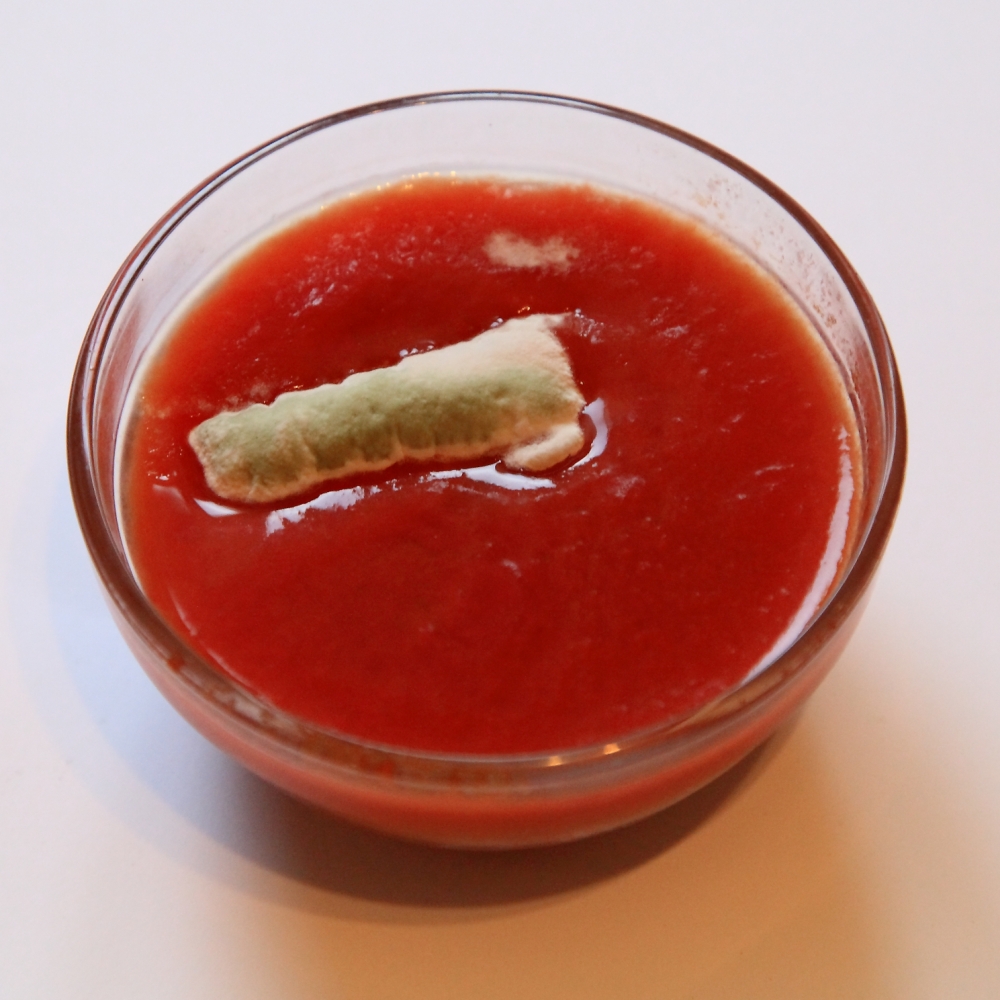
1. The Cooking Factor
Unlike smoothies, which primarily use raw ingredients, ketchup undergoes a cooking process. This heating not only changes the texture but also the nutritional profile of the tomatoes. Most smoothies pride themselves on delivering raw, unaltered nutrients.
2. Purpose and Consumption
While both ketchup and smoothies involve blending, their primary modes of consumption are vastly different. Ketchup is primarily a condiment – it’s meant to enhance or complement other dishes. On the other hand, smoothies are typically consumed alone as a beverage or meal replacement.
3. Consistency and Texture
Even though both are products of blending, ketchup is notably thicker, meant to be scooped or poured in small quantities, whereas smoothies have a drinkable viscosity.
4. Acidity and Tanginess
The presence of vinegar in ketchup gives it a tanginess that isn’t commonly found in most fruit-based smoothies. This acidic profile is more of a characteristic of sauces and condiments than beverages.
5. Salt Content
Most smoothies lean on the sweeter side, even if they incorporate vegetables. Ketchup, however, contains a noticeable amount of salt, which is typical for condiments but not drinks.
6. Cultural And Historical Context
Smoothies have a history of being health-focused beverages, often linked to dietary and fitness lifestyles. Ketchup doesn’t share this background. Its evolution and cultural significance have always revolved around its role as a condiment.
Considering these counterpoints, it becomes evident that while there are some overlapping elements between ketchup and smoothies, distinct differences set them apart in the culinary world.
But isn’t it delightful how such a simple topic can unravel layers of perspectives and discussions? Whether or not one sides with ketchup being a smoothie, the debate itself is a testament to food culture’s rich and varied tapestry.
The Verdict
It’s time to answer our burning question: Is ketchup a smoothie?
From a botanical and blending perspective, valid points highlight the similarities between ketchup and smoothies. Both utilize fruits (in this case, tomatoes) and undergo a blending process, resulting in a unified mixture. They can also have varied ingredients to enhance taste and texture.
However, when considering the broader context, the differences become more pronounced. The cooking process, primary consumption methods, consistency, and cultural context all place ketchup and smoothies in distinct categories. One serves as a complement to dishes, while the other stands alone as a beverage or meal substitute. So, where do we land?
Ketchup, in essence, is not a smoothie. While it shares some overlapping characteristics, its primary function, composition, and history make it a unique entity in the food world. That said, the fun of this debate lies not just in the verdict but in the journey of exploration itself.
It reminds us of the complexities and joys of food, how it’s intertwined with culture, and how something as simple as a condiment can spark such a delightful discourse.
In the end, whether you’re dipping your fries in ketchup or sipping on a fruit smoothie, here’s to the delightful diversity of our culinary world and the endless conversations it inspires! Cheers!






